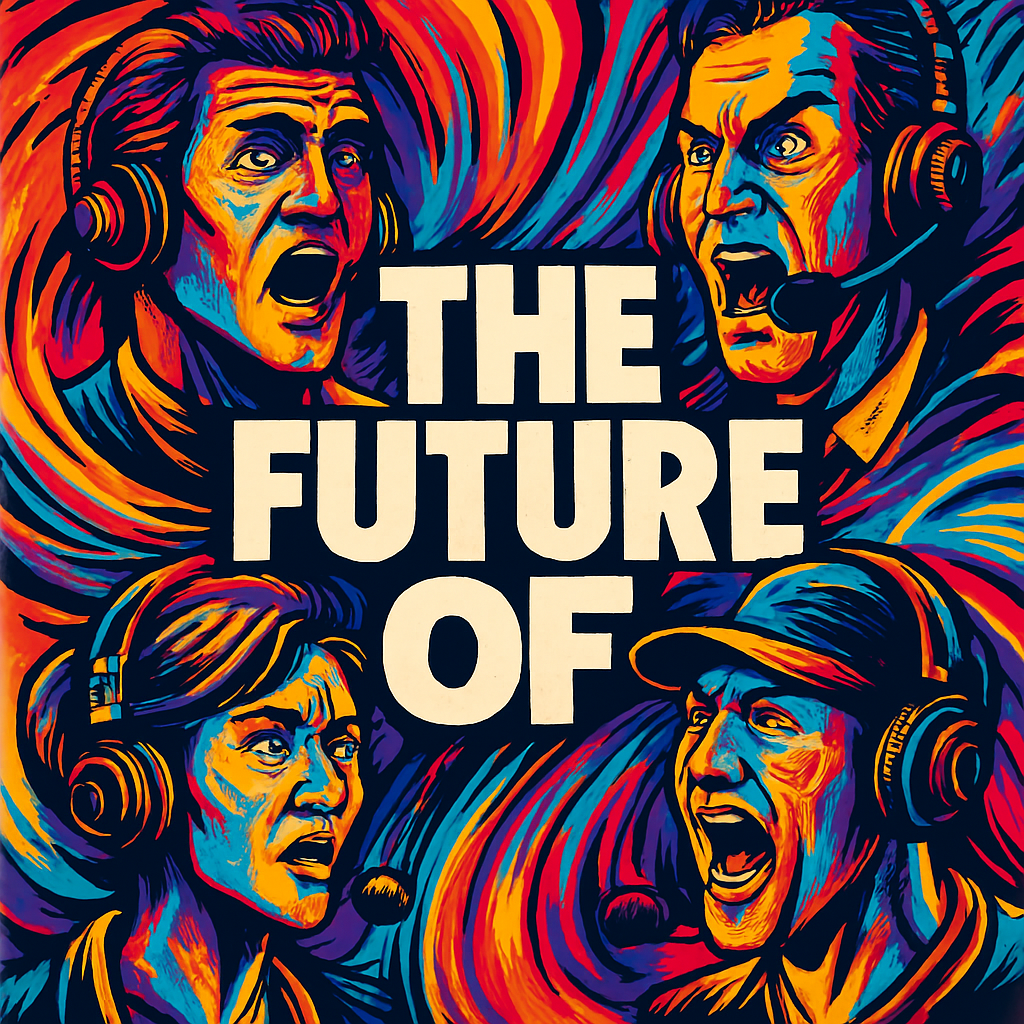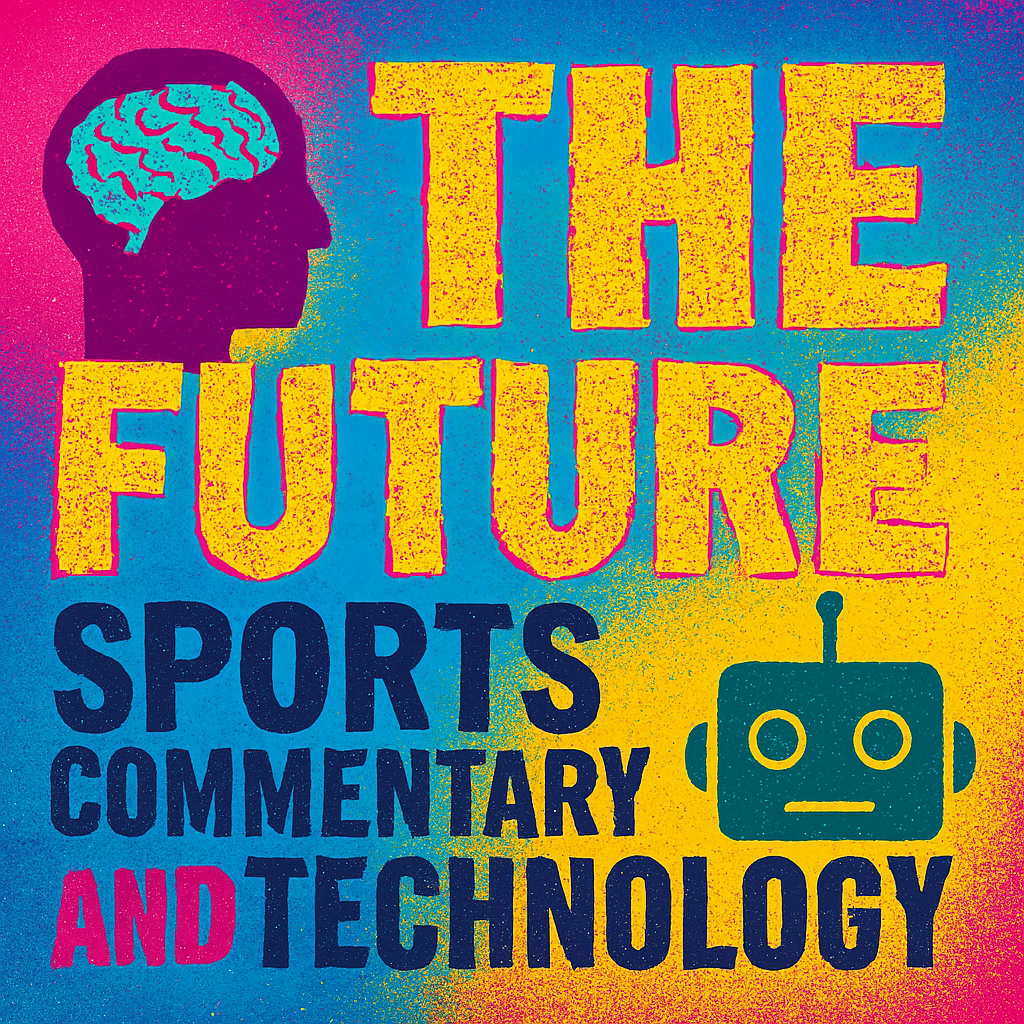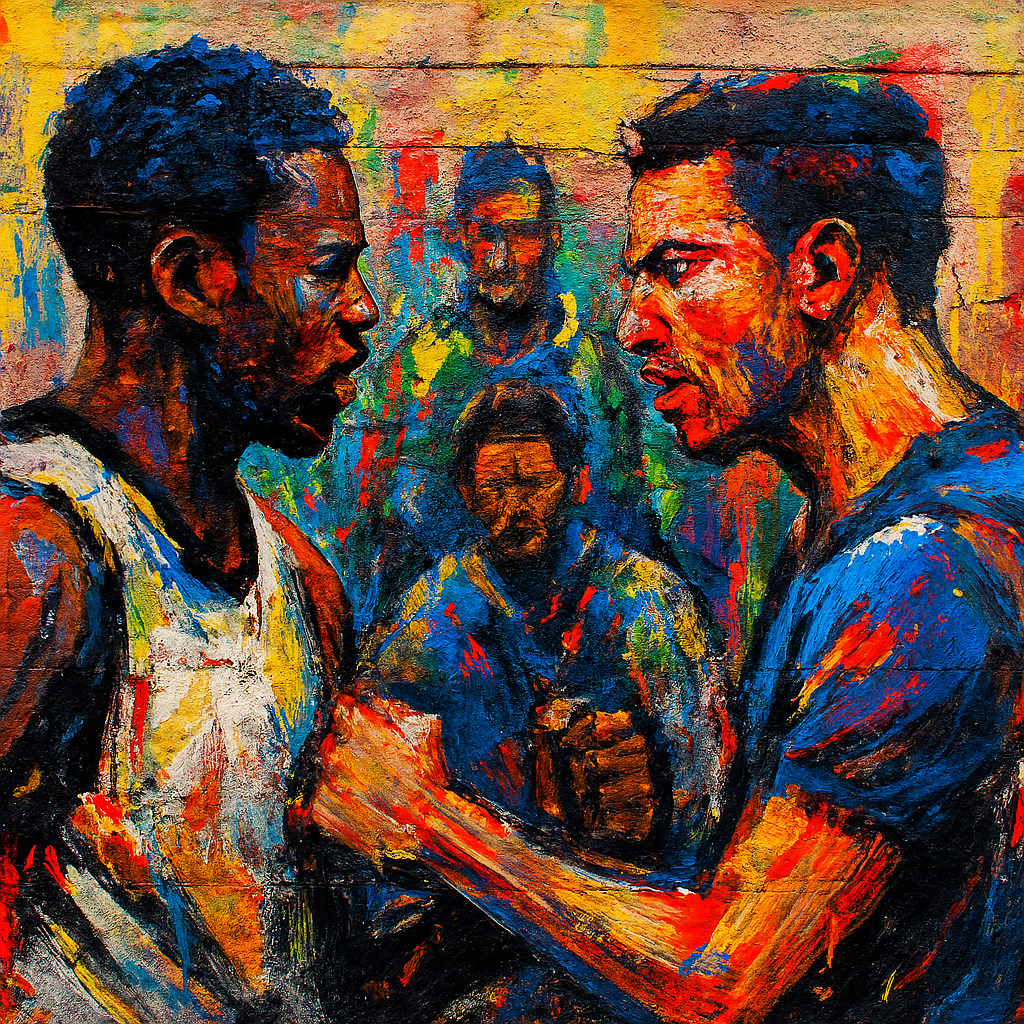Future Of Sports Commentary – Setting The Stage
Sports commentary has long been a defining element of the spectator experience, shaping how audiences perceive and enjoy games. From the early days of radio broadcasts to the modern era of live television and streaming platforms, commentators have provided context, emotion, and narrative to sporting events. With the rise of artificial intelligence, machine learning, and advanced analytics, the question arises whether human commentators will eventually be replaced by technology.
This transformation could redefine the role of commentary, altering the balance between excitement and monotony in sports. The debate is not simply about efficiency but about the cultural and emotional resonance of commentary. Technology promises precision, instant data, and multilingual accessibility, while human voices bring passion, unpredictability, and relatability. Exploring this tension reveals how sports may evolve in the coming decades.

Human Commentary – The Emotional Connection
Human commentators have historically been the emotional anchors of sports broadcasts. Their voices capture the highs and lows of competition, translating athletic performance into shared cultural memory. The excitement of a last-minute goal or the heartbreak of a missed opportunity becomes more vivid through their words. Commentators often embody national identity, regional pride, or generational nostalgia. Their ability to improvise and react in real time creates a sense of authenticity that technology struggles to replicate.
Audiences often remember iconic phrases or calls more than the technical details of the game itself. This emotional connection is not accidental but cultivated through years of cultural tradition. The human element ensures that commentary remains more than just information delivery. It becomes storytelling, drama, and artistry.
Comparative Table – Human Commentary Strengths
| Aspect | Human Commentary | Impact On Audience |
|---|---|---|
| Emotion | Passionate reactions | Heightened excitement |
| Improvisation | Spontaneous phrasing | Authentic engagement |
| Cultural Identity | National or regional pride | Stronger connection |
| Storytelling | Narrative building | Memorable experiences |
| Relatability | Human flaws and humor | Audience empathy |
Technology Commentary – Precision And Data
Technology-driven commentary introduces a new dimension of accuracy and speed. Artificial intelligence systems can process vast amounts of data in real time, offering insights that human commentators cannot match. Algorithms can instantly calculate probabilities, player statistics, and tactical breakdowns. Automated voices can deliver multilingual coverage, expanding accessibility across global audiences. Unlike humans, machines do not tire, misinterpret, or allow bias to cloud judgment. This precision appeals to fans who value analytical depth and factual clarity. However, the absence of emotional spontaneity may create a sterile atmosphere. The challenge lies in balancing factual delivery with entertainment. Technology commentary could complement rather than replace human voices, offering hybrid models of coverage.
Key Points – Technology Advantages
- Real-time statistical analysis
- Multilingual accessibility
- Consistency without fatigue
- Elimination of human bias
- Tactical breakdowns at speed
- Predictive modeling of outcomes
- Integration with augmented reality
- Enhanced replay analysis
- Personalized audience feeds
- Scalable across platforms
Historical Evolution – From Radio To AI
Sports commentary has evolved alongside communication technology. Radio broadcasts in the early 20th century relied heavily on descriptive language to paint vivid pictures for listeners. Television introduced visual context, shifting commentary toward analysis and emotional framing. Satellite broadcasting expanded global reach, allowing commentators to become international figures. The internet era brought streaming platforms, social media, and interactive commentary. Artificial intelligence now represents the next stage, capable of synthesizing data and delivering automated narratives. Each technological leap has altered the role of commentators, but none has eliminated the human presence entirely. The historical trajectory suggests adaptation rather than replacement. Commentary evolves to fit the medium, balancing tradition with innovation.
Timeline Table – Commentary Evolution
| Era | Medium | Commentary Style | Impact |
|---|---|---|---|
| 1920s | Radio | Descriptive narration | Imagination-driven |
| 1950s | Television | Emotional analysis | Visual storytelling |
| 1980s | Satellite | Global reach | International voices |
| 2000s | Internet | Interactive commentary | Audience participation |
| 2020s | AI Systems | Data-driven precision | Hybrid possibilities |
Audience Experience – Excitement Or Boredom
The audience experience is central to evaluating whether technology enhances or diminishes sports commentary. Excitement often arises from unpredictability, humor, and emotional resonance. Human commentators excel in these areas, creating memorable moments that transcend the game itself. Technology, by contrast, offers predictability and factual clarity, which may appeal to analytical fans but risk monotony for others. The danger lies in commentary becoming too mechanical, stripping away the drama that makes sports compelling. Yet, technology can also heighten excitement by providing deeper insights and immersive features. The balance depends on how audiences value emotion versus information. Hybrid models may offer the best of both worlds, combining human passion with machine precision.
Audience Impact Points
- Emotional resonance drives excitement
- Predictability risks monotony
- Humor enhances relatability
- Data appeals to analytical fans
- Hybrid models balance strengths
- Cultural identity enriches experience
- Spontaneity creates memorable calls
- Technology enables personalization
- Excessive automation risks detachment
- Audience diversity shapes preferences
Hybrid Models – Blending Human And Machine
Hybrid commentary models combine the strengths of human emotion with technological precision. Broadcasters are experimenting with systems where AI provides real-time data while human commentators interpret and dramatize it. This approach ensures that audiences receive both factual clarity and emotional resonance. Machines can handle repetitive tasks such as statistical updates, freeing humans to focus on storytelling. The blend creates a richer, more layered experience for viewers. Hybrid models also allow for customization, where fans can choose commentary styles that suit their preferences. Some may prefer data-heavy feeds, while others lean toward narrative-driven broadcasts. This flexibility reflects the diversity of sports audiences worldwide.
Hybrid Commentary Table
| Feature | Human Role | Machine Role | Audience Benefit |
|---|---|---|---|
| Emotion | Storytelling and passion | Neutral delivery | Balanced excitement |
| Data | Interpretation | Real-time analysis | Depth of insight |
| Flexibility | Improvisation | Consistency | Personalized feeds |
| Accessibility | Cultural resonance | Multilingual support | Global reach |
| Efficiency | Focus on drama | Handle repetition | Seamless coverage |
Cultural Identity – Commentary As Heritage
Sports commentary is deeply tied to cultural identity and heritage. Iconic voices often become symbols of national pride, remembered across generations. Technology risks diluting this cultural resonance if commentary becomes too standardized. Human commentators bring local dialects, humor, and references that machines cannot replicate. These elements create a sense of belonging for audiences. Commentary is not just about describing events but about embedding them in cultural narratives. Fans often recall commentary as part of their collective memory of historic matches. Technology may provide global accessibility but risks erasing local flavor. Preserving cultural identity requires careful integration of human voices. The heritage of commentary must remain central even as technology advances.
Cultural Identity Points
- Commentary reflects national pride
- Local dialects enrich broadcasts
- Humor creates relatability
- Machines risk standardization
- Collective memory tied to voices
- Heritage shapes fan experience
- Commentary as cultural storytelling
- Technology expands reach but dilutes flavor
- Human voices preserve authenticity
- Balance needed for global audiences
Accessibility – Expanding Global Reach
Technology-driven commentary enhances accessibility for diverse audiences. Automated systems can instantly translate commentary into multiple languages. This feature allows fans worldwide to engage with sports in real time. Accessibility also extends to fans with disabilities, as AI can generate descriptive audio feeds or visual captions. Human commentators often lack the resources to provide such inclusivity. Machines ensure consistency across platforms, reducing barriers to participation. However, accessibility must not come at the cost of emotional resonance. Fans may appreciate translation but still crave the passion of human voices. Hybrid models can ensure inclusivity while maintaining excitement. Accessibility becomes a key driver of technological adoption in sports commentary.
Accessibility Table
| Accessibility Feature | Human Limitation | Machine Capability | Audience Impact |
|---|---|---|---|
| Language Translation | Limited coverage | Instant multilingual feeds | Global participation |
| Disability Support | Resource constraints | Audio descriptions and captions | Inclusive viewing |
| Consistency | Fatigue and bias | Uniform delivery | Equal experience |
| Personalization | Limited options | Customizable feeds | Tailored engagement |
| Scalability | Regional focus | Worldwide reach | Expanded fan base |
Innovation – Augmented Reality And Commentary
Augmented reality introduces new possibilities for sports commentary. AI-driven systems can overlay real-time statistics and tactical insights directly onto broadcasts. Fans can view probability charts, player metrics, and strategic breakdowns during live games. Human commentators can interpret these overlays, adding narrative depth. Augmented reality transforms commentary into an interactive experience. Audiences no longer passively consume information but actively engage with it. This innovation enhances excitement by merging entertainment with education. However, excessive reliance on overlays risks overwhelming viewers. Balance is essential to ensure clarity and enjoyment. Augmented reality represents a frontier where commentary evolves into immersive storytelling.
Augmented Reality Points
- Real-time overlays enhance broadcasts
- Tactical insights enrich understanding
- Interactive features engage fans
- Human voices interpret data
- Excessive overlays risk confusion
- Entertainment merges with education
- Immersion heightens excitement
- Balance ensures clarity
- Technology expands possibilities
- Commentary becomes interactive storytelling
Economics – Cost And Efficiency
Economic considerations drive the adoption of technology in sports commentary. Automated systems reduce costs by minimizing reliance on large commentary teams. Machines can operate continuously without fatigue, lowering production expenses. Broadcasters see efficiency gains in multilingual coverage and real-time analytics. However, cost savings may come at the expense of cultural richness. Audiences may resist sterile, machine-driven broadcasts. Human commentators remain valuable for branding and audience loyalty. The economics of commentary must balance efficiency with authenticity. Hybrid models may offer cost savings while preserving emotional depth. The financial dimension shapes how quickly technology replaces or complements human voices.
Economics Table
| Factor | Human Commentary | Machine Commentary | Economic Impact |
|---|---|---|---|
| Cost | Salaries and logistics | Lower operational expenses | Reduced budgets |
| Efficiency | Limited scalability | Continuous operation | Streamlined production |
| Branding | Iconic voices | Generic delivery | Audience loyalty risk |
| Accessibility | Resource-heavy | Automated feeds | Global reach at low cost |
| Balance | Emotional richness | Analytical precision | Hybrid sustainability |
Fan Engagement – Personalization And Choice
Fan engagement is increasingly shaped by personalization. Technology allows audiences to select commentary styles that suit their preferences. Some may choose data-heavy feeds, while others prefer narrative-driven broadcasts. Personalization enhances satisfaction by aligning coverage with individual interests. Human commentators cannot provide such tailored experiences at scale. Machines enable customization across platforms, ensuring diverse engagement. However, personalization risks fragmenting audiences, reducing shared cultural experiences. Sports thrive on collective excitement, which may weaken if fans consume isolated feeds. Hybrid models can balance personalization with communal resonance. Fan engagement becomes a central factor in shaping commentary’s future.
Fan Engagement Points
- Personalization enhances satisfaction
- Choice aligns with preferences
- Machines enable customization
- Human voices lack scalability
- Fragmentation risks cultural loss
- Collective excitement may weaken
- Hybrid models balance diversity
- Engagement drives adoption
- Technology expands options
- Commentary reflects audience individuality

Ethics – Trust And Transparency
Ethical considerations play a crucial role in the adoption of technology in sports commentary. Audiences must trust that automated systems deliver accurate and unbiased information. Transparency in how algorithms process data becomes essential to maintaining credibility. Human commentators often reveal their biases openly, which audiences can interpret and contextualize. Machines, however, may embed hidden biases within their programming, creating ethical dilemmas. Broadcasters must ensure that technology does not manipulate narratives or distort perceptions. Trust is built through openness about how commentary systems operate. Ethical oversight will be necessary to safeguard fairness in sports coverage. Without transparency, audiences may disengage from machine-driven commentary. Ethics therefore becomes a cornerstone of technological integration.
Ethics Table
| Ethical Concern | Human Commentary | Machine Commentary | Audience Impact |
|---|---|---|---|
| Bias | Openly acknowledged | Hidden in algorithms | Trust challenges |
| Transparency | Personal perspective | Requires disclosure | Credibility risk |
| Manipulation | Limited influence | Potential narrative distortion | Audience disengagement |
| Accountability | Individual responsibility | Systemic oversight | Need for regulation |
| Fairness | Cultural context | Algorithmic neutrality | Balanced coverage |
Emotional Resonance – The Human Factor
Emotional resonance remains the defining strength of human commentary. Machines can deliver facts, but they cannot replicate the passion of a commentator’s voice during a dramatic moment. Audiences connect deeply with the excitement, humor, and empathy expressed by human voices. Emotional resonance transforms sports into shared cultural experiences. Without it, broadcasts risk becoming sterile and detached. Technology may enhance factual clarity but cannot replace the human ability to inspire. Commentary is not just about describing events but about making audiences feel them. Emotional resonance ensures that sports remain thrilling and memorable. Hybrid models must preserve this human factor to avoid monotony. The emotional dimension is irreplaceable in sports commentary.
Emotional Resonance Points
- Passion creates excitement
- Humor enhances relatability
- Empathy builds connection
- Machines lack emotional depth
- Shared experiences enrich culture
- Sterility risks disengagement
- Inspiration drives loyalty
- Human voices shape memory
- Hybrid models preserve emotion
- Resonance ensures lasting impact
Future Predictions – Commentary In 2050
Looking ahead, sports commentary in 2050 may be radically different. AI systems could deliver fully immersive broadcasts with holographic overlays. Fans may interact directly with commentary, asking questions and receiving instant responses. Human commentators may serve as cultural anchors, guiding audiences through complex technological landscapes. Personalized feeds could dominate, allowing fans to tailor commentary to their preferences. Global accessibility may erase language barriers entirely. However, the risk of over-automation remains, potentially reducing excitement. Hybrid models will likely balance innovation with tradition. Commentary may evolve into a multi-layered experience combining narrative, data, and interactivity. The future promises both opportunity and challenge. Sports commentary will remain central to how audiences experience games.
Future Predictions Table
| Prediction | Human Role | Machine Role | Audience Impact |
|---|---|---|---|
| Holographic Overlays | Interpretation | Data visualization | Immersive experience |
| Interactive Commentary | Cultural guidance | Instant responses | Active engagement |
| Personalized Feeds | Emotional depth | Customization | Tailored satisfaction |
| Global Accessibility | Local flavor | Multilingual support | Worldwide reach |
| Hybrid Balance | Storytelling | Precision | Sustained excitement |
Technology Risks – Over-Automation
Over-automation poses significant risks to sports commentary. Excessive reliance on machines may strip broadcasts of spontaneity and emotional resonance. Audiences could perceive commentary as sterile, reducing excitement. Over-automation also risks homogenizing coverage, erasing cultural diversity. Machines may prioritize efficiency over creativity, leading to monotony. Human commentators provide unpredictability that machines cannot replicate. The danger lies in losing the artistry of commentary. Over-automation may also reduce employment opportunities for commentators. Audiences may resist broadcasts that feel detached and mechanical. Balancing automation with human input is essential to avoid these pitfalls. Risks must be managed to preserve the vibrancy of sports commentary.
Technology Risks Points
- Sterility reduces excitement
- Homogenization erases diversity
- Efficiency overrides creativity
- Monotony risks disengagement
- Unpredictability lost in automation
- Artistry diminished by machines
- Employment opportunities decline
- Detachment weakens connection
- Resistance from audiences grows
- Balance essential for vibrancy
Commentary As Storytelling – Beyond Data
Sports commentary is fundamentally storytelling, not just data delivery. Human voices weave narratives that transform games into cultural events. Machines can provide statistics but cannot craft compelling stories. Storytelling creates emotional arcs that audiences remember long after the game ends. Without storytelling, broadcasts risk becoming purely informational. Machines may enhance analysis but lack narrative creativity. Storytelling ensures that sports remain engaging and memorable. Hybrid models must integrate data into human-driven narratives. Commentary as storytelling remains central to the spectator experience.
Storytelling Table
| Element | Human Commentary | Machine Commentary | Audience Impact |
|---|---|---|---|
| Narrative | Creative arcs | Factual delivery | Memorable drama |
| Emotion | Passionate voice | Neutral tone | Shared excitement |
| Improvisation | Spontaneous phrasing | Predictable output | Authenticity |
| Memory | Iconic calls | Statistical records | Cultural legacy |
| Engagement | Relatable humor | Analytical depth | Balanced experience |
Trust In Technology – Building Confidence
Trust in technology is essential for audiences to embrace machine-driven commentary. Fans must believe that automated systems provide accurate, unbiased, and reliable information. Without confidence, audiences may reject broadcasts that rely heavily on machines. Transparency in how algorithms operate builds credibility. Broadcasters must explain how data is collected, processed, and delivered. Human commentators often earn trust through familiarity and reputation, while machines must earn it through consistency. Trust also depends on accountability, ensuring that errors are corrected quickly. Audiences will demand clarity about whether commentary is human, machine, or hybrid. Building confidence requires openness and reliability. Trust becomes the foundation for technological adoption in sports commentary.
Trust Table
| Trust Factor | Human Commentary | Machine Commentary | Audience Impact |
|---|---|---|---|
| Familiarity | Established voices | New systems | Comfort vs uncertainty |
| Transparency | Personal perspective | Algorithmic disclosure | Credibility balance |
| Accountability | Individual responsibility | Systemic correction | Confidence in fairness |
| Reliability | Emotional resonance | Consistent accuracy | Sustained engagement |
| Adoption | Cultural loyalty | Technological trust | Future acceptance |
Audience Diversity – Global Perspectives
Sports audiences are diverse, spanning cultures, languages, and generations. Commentary must reflect this diversity to remain relevant. Human commentators often bring local flavor, but machines can provide global accessibility. Diversity ensures that broadcasts resonate across different identities. Technology allows multilingual feeds, but risks erasing cultural nuance. Hybrid models can balance inclusivity with authenticity. Audience diversity shapes expectations for commentary style and delivery. Younger fans may prefer data-heavy feeds, while older audiences value storytelling. Broadcasters must adapt to these varied preferences. Diversity ensures that commentary remains a universal cultural experience.
Audience Diversity Points
- Global audiences demand inclusivity
- Local flavor enriches broadcasts
- Machines provide multilingual coverage
- Cultural nuance risks dilution
- Hybrid models balance authenticity
- Generational preferences differ
- Younger fans value data
- Older fans value storytelling
- Diversity shapes expectations
- Commentary must adapt to identities

Humor – Lightness In Commentary
Humor plays a vital role in sports commentary. Human commentators often use wit to lighten tense moments. Humor creates relatability, making broadcasts more enjoyable. Machines struggle to replicate spontaneous humor. Audiences value the unpredictability of jokes and playful banter. Humor also builds connection between commentators and fans. Without humor, broadcasts risk becoming overly serious and sterile. Technology may simulate humor but lacks authenticity. Humor ensures that commentary remains entertaining as well as informative.
Humor Table
| Humor Element | Human Commentary | Machine Commentary | Audience Impact |
|---|---|---|---|
| Spontaneity | Improvised jokes | Programmed humor | Authentic laughter |
| Relatability | Shared culture | Generic phrasing | Stronger connection |
| Entertainment | Playful banter | Neutral delivery | Enjoyable broadcasts |
| Tension Relief | Lightens drama | Factual focus | Balanced atmosphere |
| Authenticity | Genuine wit | Artificial attempts | Audience loyalty |
Commentary As Education – Learning Through Sports
Sports commentary can serve as an educational tool. Human commentators often explain rules, strategies, and historical context. Machines can enhance this by providing real-time data and tactical breakdowns. Educational commentary enriches the audience’s understanding of the game. Fans learn not only what is happening but why it matters. Commentary becomes a classroom for sports culture and strategy. Machines excel at delivering factual clarity, while humans provide narrative depth. Education ensures that broadcasts appeal to both casual viewers and dedicated fans. Hybrid models can combine teaching with entertainment. Commentary as education elevates sports beyond spectacle.
Educational Points
- Commentary explains rules
- Strategy breakdowns enrich understanding
- Machines provide factual clarity
- Humans add narrative depth
- Fans learn cultural context
- Education appeals to casual viewers
- Dedicated fans gain tactical insight
- Hybrid models combine teaching and drama
- Commentary becomes a classroom
- Sports elevated beyond spectacle
Disability Inclusion – Expanding Access And Representation
Technology offers transformative potential for disability inclusion in sports commentary. Automated systems can generate real-time captions, audio descriptions, and tactile feedback for visually or hearing-impaired audiences. These features make broadcasts more accessible, allowing fans with disabilities to engage fully with live sports. AI can also adapt commentary to cognitive or sensory needs, offering simplified language or customizable pacing. However, inclusion must go beyond access—it must reflect representation.
Human commentators with disabilities bring unique perspectives and challenge stereotypes, enriching the cultural fabric of sports media. Machines may provide accessibility but lack lived experience. Inclusive commentary requires both technological innovation and human diversity. Representation ensures that sports culture reflects all identities. Disability inclusion is not a technical upgrade—it’s a cultural imperative.
Disability Inclusion Points
- Real-time captions enhance accessibility
- Audio descriptions support visually impaired fans
- Simplified language aids cognitive inclusion
- Customizable pacing improves sensory engagement
- Technology expands access
- Human voices bring lived experience
- Representation challenges stereotypes
- Inclusive commentary reflects all identities
- Machines support but cannot replace diversity
- Inclusion is a cultural imperative
Pros And Cons – Human Vs Machine Commentary
Human Commentary
| Pros | Cons |
|---|---|
| Emotional resonance and spontaneity | Limited scalability and fatigue |
| Cultural identity and storytelling | Subjective bias and inconsistency |
| Humor and improvisation | Language limitations |
| Relatability and authenticity | Cost-intensive production |
| Iconic voices and legacy | Variable accuracy |
Machine Commentary
| Pros | Cons |
|---|---|
| Real-time data and precision | Lack of emotional depth |
| Multilingual accessibility | Sterile delivery risks boredom |
| Consistent and scalable | Absence of cultural nuance |
| Customizable feeds | Limited improvisation |
| Integration with AR and analytics | Potential bias in algorithms |
Hybrid Commentary
| Pros | Cons |
|---|---|
| Combines emotion and data | Requires careful integration |
| Balances tradition and innovation | Risk of over-reliance on tech |
| Offers personalization and depth | May confuse audiences with options |
| Preserves cultural resonance | Needs ethical oversight |
| Enhances accessibility and engagement | Complex production demands |
Final Balance – Excitement And Boredom
The ultimate question is whether technology makes sports commentary more exciting or boring. Excitement thrives on unpredictability, passion, and humor. Human voices excel in these areas, creating memorable cultural moments. Machines provide precision, clarity, and accessibility, appealing to analytical fans. Boredom arises when broadcasts become sterile or overly mechanical. Hybrid models offer the best balance, combining emotion with data. Excitement depends on preserving human resonance while integrating technological innovation. Boredom must be avoided by ensuring commentary remains engaging. The balance will shape the future of sports culture. Commentary must inspire as well as inform. The path forward lies in integration, not replacement.
Final Balance Table
| Factor | Human Commentary | Machine Commentary | Audience Impact |
|---|---|---|---|
| Excitement | Passion and spontaneity | Data-driven clarity | Thrilling engagement |
| Boredom | Rare monotony | Risk of sterility | Audience disengagement |
| Balance | Emotional resonance | Analytical precision | Sustained enjoyment |
| Innovation | Storytelling | Technological overlays | Future possibilities |
| Integration | Hybrid models | Complementary roles | Cultural preservation |
Conclusion – The Path Ahead
The future of sports commentary will likely be defined by coexistence rather than replacement. Human voices will continue to provide emotional depth, cultural resonance, and narrative artistry. Technology will enhance broadcasts with precision, accessibility, and analytical richness. The challenge lies in integrating these elements without sacrificing excitement or authenticity. Sports thrive on unpredictability, and commentary must reflect that spirit. Audiences will demand both passion and information, pushing broadcasters toward hybrid solutions. The debate over excitement versus boredom will persist, shaped by evolving technologies and cultural expectations. Ultimately, commentary is not just about describing events but about shaping how they are remembered. The path ahead requires innovation grounded in respect for tradition.
Join The Discussion
How do you envision the future of sports commentary in a world increasingly shaped by technology? Will passion and storytelling remain central, or will precision and data dominate the experience?
#SportsCommentary #FutureOfSports #TechnologyInSports #AICommentary #SportsCulture #ExcitementVsBoredom #HybridBroadcasts #SportsInnovation #CulturalIdentity #SportsAndTechnology














Leave a Reply